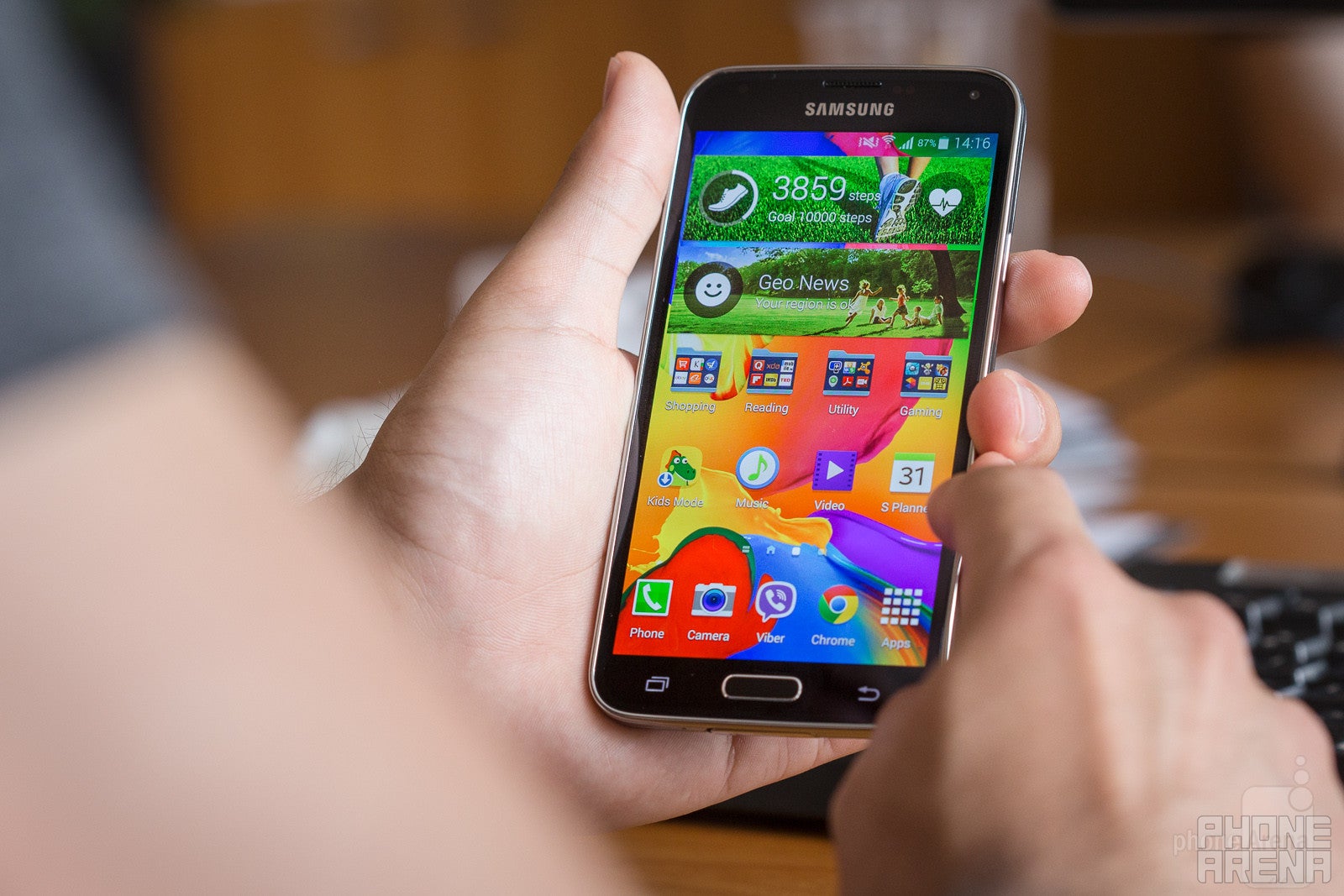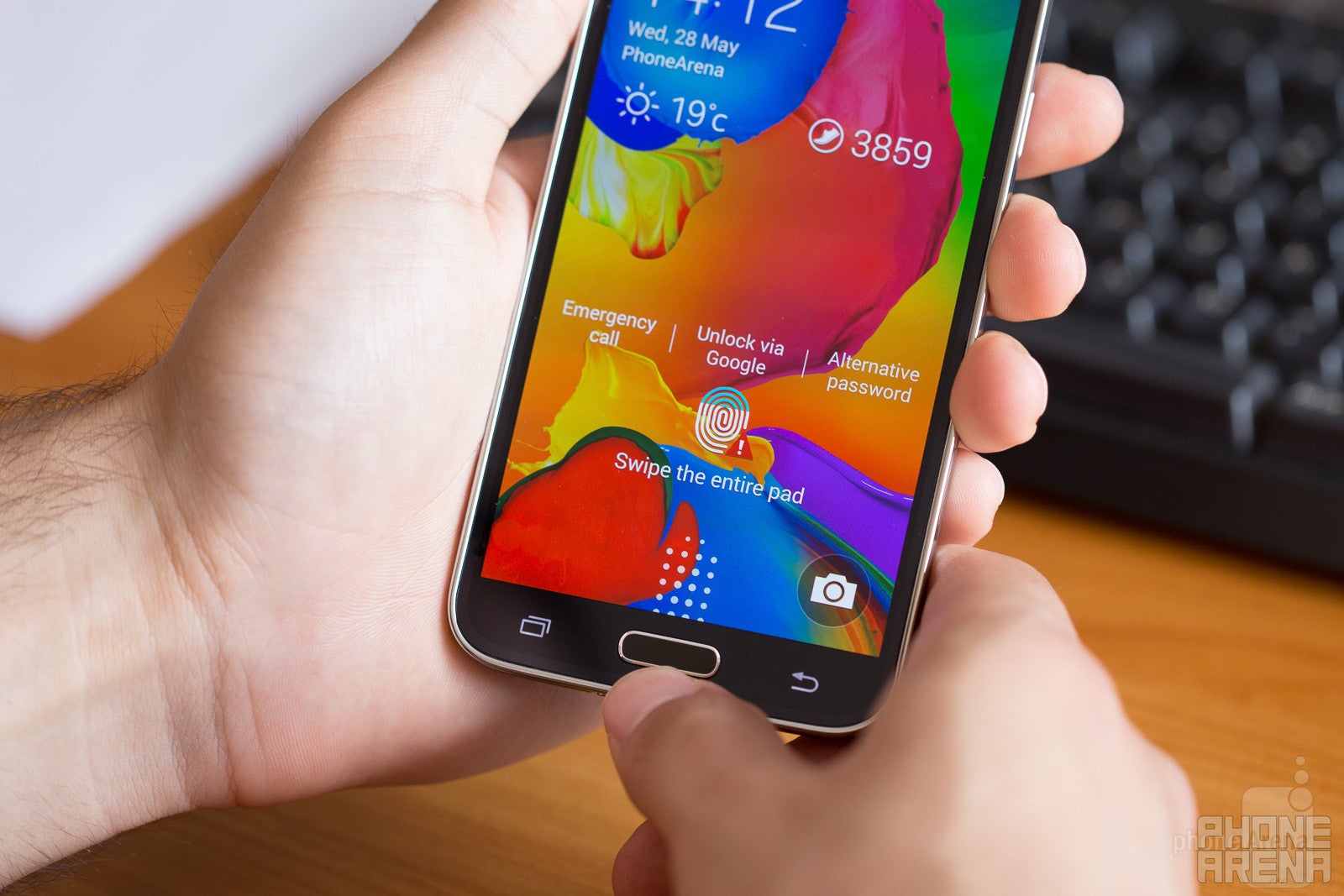Living with the Samsung Galaxy S5, week 1: handshake

Preface
We've done this before with the LG G2, and we learned a lot. The depths at which we plunged into the last LG flagship package revealed some annoyances, a few manufacturer peculiarities that left us puzzled, and, seldomly, some small disasters. We also got to know the many stronger points of the G2. Best of all, through that process, we were able to pass those insights onto you. Which is exactly what we're trying to repeat here.
Of course, before we dive into the details, a disclaimer of sorts is required. Like before, idiosyncrasy is not just a by-product of this piece. Rather, it's a sought-after effect. This is an important clarification, as this sets this format apart from our typical reviewing process, which aims to reduce bias by following objective guidelines that can't be circumvented unnoticed. In other words, this is one of those rare occasions in which you can rightfully go ahead and call me subjective or partisan and expect no retort. That's by definition.
Admittedly, this will worry some. What if I, who's been given a mandate to take the Galaxy S5 through its paces, and I mean truly through its paces, am prejudiced against Samsung for this or that reason? Well, that'll be up to you to decide, and there's only one way to find out. To minimize the possibility of an ensuing off-topic, here's a full disclosure that I have, for the longest time, felt has a part as a disclaimer in any professional review: device history. Indeed, that may sound like an unimportant factor to some, but it's vital to understanding the platform atop of which one issues verdicts. Or where one's coming from, so to speak.
It's fair to say I've been around the block. In recent history, I've gone through devices like the Nokia E72, the iPhone 3GS, the Nexus 4, and the Xiaomi Mi3 (which has now been replaced by the S5 as my current daily driver for the purposes of this long-term review). I also consider myself very well-versed in devices like the Samsung Galaxy S4, LG G2, the LG G Pro 2, the Oppo Find 7a, the Sony Xperia Z1, and the Nexus 5. In addition, I've had the luxury of messing around with just about every flagship on the planet from the last year, and I've also had my fair share of hands-on time with quite a few low-to-mid range devices. Those are the devices that, often without my explicit consent, my brain naturally uses for a benchmark whenever something new comes along.
Lastly, and on a much brighter note, this is the first and only time you'll have to go through the above, lengthy disclaimer.
Living with the Samsung Galaxy S5, week 1
To say that I wasn't well-acquainted with the Galaxy S5 before I took it in my keep would be incorrect. Regardless of where your allegiances lie, there's no denying facts -- and those paint an unambiguous picture -- Samsung's flagship is the king of the hill in Android land, and this meant we had to prepare a ton of content around it. This allowed me to get some hands-on time with it, but it wasn't my daily driver. Not until exactly a week ago.
It is now, and the first set of discrepancies between my initial impressions and the reality that constant usage has forced onto me, is hard to ignore. Indeed, the idea of this format is that we'll give every built-in feature of a device (especially the ones the vendor markets excessively) a chance and a good, long look. As some of you may have guessed, the first two on that list are the new, refreshed TouchWiz software, and the fingerprint scanner.
TouchWiz is in a dire need of a... redesign. Again.
What is the first thing you do when you pull out your brand new phone out of its shiny box? Check out what it can do, of course. This almost surely means going through its settings menu, and checking out the different features. That's exactly how I approached the Galaxy S5. As mentioned, I was already well-aware of what to expect there, but I never imagined I'll end up so disappointed with TouchWiz in the longer term, at least in certain regards.

Don't get me wrong, I definitely like the latest, mostly-visual redesign of Samsung's skin -- it certainly is far more attractive than previous versions. Unfortunately, what it needs is an overhaul, and I don't mean just prettier graphics. Rather, Samsung needs to take a good, long look at its overlay from an ease-of-use standpoint, and tweak accordingly. Going back to the settings menu, the best word to describe it is "anarchy". A raging one. Again, don't get me wrong. As an Android modder myself, I love having control over as much of the system as humanly possible, but at the same time I also value uniformity and quick access.

Try navigating this willy-nilly jungle of options if you can!
For example, I wondered if the awfully-gimmicky Smart Scroll (built-in browser and e-mail apps can be scrolled by tilting the device or nodding with your head awkwardly) and the somewhat nice Air Wake Up (wake the device by waving above the proximity sensor) finally saw their demise in the transition to a cleaner-looking TouchWiz. Alas, they have not. Samsung has simply hidden them 3 layers down, and in the least expected place. See, there's a specific "Controls" tab in the settings, that contains the various motion, gesture, and Air view features. You'd guess that this is a logical place for the former two to be found (them being motion gestures), but that's not where the company put them. Instead, you have to go to Accessibility > Dexterity and interaction and dig them out from there.
But it gets worse. Despite the mind-boggling performance muscle that the most powerful bin of the Snapdragon 801 chip offers, along with the healthy 2GB of LPDDR3 RAM, the S5 stutters consistently when browsing the settings in grid and tabbed arrangement. Heck, even the app drawer shows signs of lag, and the Dialer continues building upon its legacy of high response times. The rest of the interface handles itself well, though, at least from what I've seen so far.
The horrors of the embedded fingerprint scanner

In a not so random happenstance, I'll come right forward and feed you my final verdict before I get into details. The fingerprint scanner on the Samsung Galaxy S5 is bad news. It frankly doesn't live up to the standard that a company of Samsung's stature should be putting in front of itself. In fact, and in complete honesty, I couldn't wait until the end of the first week so that I could rightfully say I've given it a chance, it did not stick, and disable it in favor of a simple swipe unlock.

As far as the fingerprint scanner on the S5 is concerned, this is a more common sight than you'd like to believe. Ugh!
In conclusion, even if you focus each and every time you need to unlock your device (of course you won't do that), there's still a decent chance that every other attempt will be a failed one.
The TouchWiz goodies
A few days ago, an earthquake with a 6.8-magnitude hit the Aegean Sea, and the shock was felt in my area. Since I was driving at that exact moment, I felt nothing, but shortly after I noticed that my Galaxy S5 had sent me a notification through the built-in Geo News feature, warning me of the earthquake. Geo News also provided me with quick access to tips on how to deal with an emergency of that type, and to my contacts, to whom I could send a pre-defined text message that I'm either okay or in need of help. That's the type of functionality that a sane person can't say no to, and, thus, the type that Samsung should target.
I also quite appreciate the unique Ultra Power Saving Mode, as I've already come to depend on its promise once, and it sure delivered. In one scenario, I activated the feature at 10% remaining charge, and the phone lost just 1% in the next 8 to 10 hours or so. Granted, I wasn't really using it much during that time, but it did give me some peace of mind, both then and for the future.
Speaking of longevity, it's hard to ignore the fact that the Galaxy S5 is a real trooper in this regard. On average, so far, I only charge the S5 every other night, and I've never been in danger of losing power. That's with 3G and Wi-Fi constantly on, and with me using the phone for browsing, chat, and even some light reading. Lastly, I also appreciate the relative speediness with which the battery regains charge when plugged into the wall -- it's not quite as fast as the Oppo Find 7a I reviewed a while ago, but it's definitely faster than some of the S5's main Android rivals.
What lies ahead
A single week is too little of a time window to really get to know a device, meaning that we're not nearly done with the Samsung Galaxy S5. In the coming week, I plan on thoroughly testing a much wider selection of features found within the never-ending abyss that is the TouchWiz software on board the company's new flagship, and, then, report back to you folks. Until then!
Follow us on Google News













Things that are NOT allowed:
To help keep our community safe and free from spam, we apply temporary limits to newly created accounts: